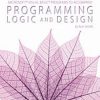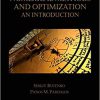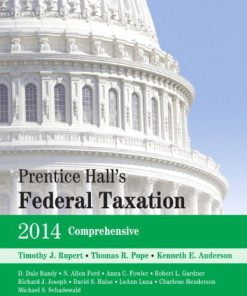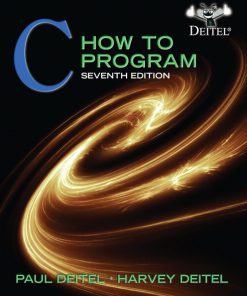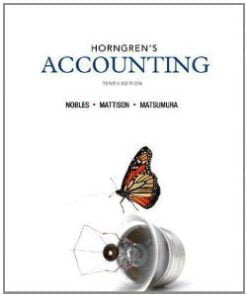Solution Manual for Introductory Statistics 9th by Mann
$35.00 Original price was: $35.00.$26.50Current price is: $26.50.
Solution Manual for Introductory Statistics 9th by Mann
Solution Manual for Introductory Statistics 9th by Mann
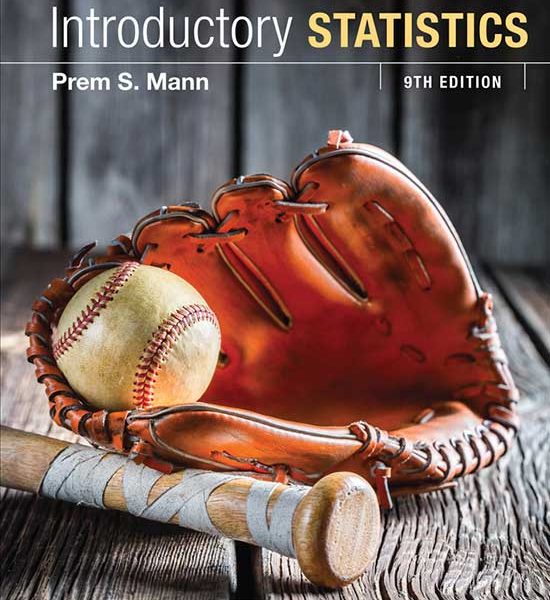
Product details:
- ISBN-10 : 1119296935
- ISBN-13 : 978-1119296935
- Author: Mann
Introductory Statistics, 9th Edition is written for a one or two semester first course in applied statistics and is intended for students who do not have a strong background in mathematics. The only prerequisite is knowledge of elementary algebra. Introductory Statistics is known for its realistic examples and exercises, clarity and brevity of presentation, and soundness of pedagogical approach.
Table contents:
- CHAPTER 1 Introduction
- 1.1 Statistics and Types of Statistics
- Case Study 1–1 2014 Lobbying Spending by Selected Companies
- Case Study 1–2 Americans Life Outlook, 2014
- 1.2 Basic Terms
- 1.3 Types of Variables
- 1.4 Cross-Section Versus Time-Series Data
- 1.5 Population Versus Sample
- 1.6 Design of Experiments
- 1.7 Summation Notation
- Uses and Misuses
- Glossary
- Supplementary Exercises
- Advanced Exercises
- Self-Review Test
- Technology Instructions
- Technology Assignments
- CHAPTER 2 Organizing and Graphing Data
- 2.1 Organizing and Graphing Qualitative Data
- Case Study 2–1 Ideological Composition of the U.S. Public, 2014
- Case Study 2–2 Millennials’ Views on Their Level of Day-to-Day Banking Knowledge
- 2.2 Organizing and Graphing Quantitative Data
- Case Study 2–3 Car Insurance Premiums per Year in 50 States
- Case Study 2–4 Hours Worked in a Typical Week by Full-Time U.S. Workers
- Case Study 2–5 How Many Cups of Coffee Do You Drink a Day?
- 2.3 Stem-and-Leaf Displays
- 2.4 Dotplots
- Uses and Misuses
- Glossary
- Supplementary Exercises
- Advanced Exercises
- Self-Review Test
- Technology Instructions
- Technology Assignments
- CHAPTER 3 Numerical Descriptive Measures
- 3.1 Measures of Center for Ungrouped Data
- Case Study 3–1 2013 Average Starting Salaries for Selected Majors
- Case Study 3–2 Education Level and 2014 Median Weekly Earnings
- 3.2 Measures of Dispersion for Ungrouped Data
- 3.3 Mean, Variance, and Standard Deviation for Grouped Data
- 3.4 Use of Standard Deviation
- Case Study 3–3 Does Spread Mean the Same as Variability and Dispersion?
- 3.5 Measures of Position
- 3.6 Box-and-Whisker Plot
- Uses and Misuses
- Glossary
- Supplementary Exercises
- Advanced Exercises
- Appendix 3.1
- Self-Review Test
- Technology Instructions
- Technology Assignments
- CHAPTER 4 Probability
- 4.1 Experiment, Outcome, and Sample Space
- 4.2 Calculating Probability
- 4.3 Marginal Probability, Conditional Probability, and Related Probability Concepts
- Case Study 4–1 Do You Worry About Your Weight?
- 4.4 Intersection of Events and the Multiplication Rule
- 4.5 Union of Events and the Addition Rule
- 4.6 Counting Rule, Factorials, Combinations, and Permutations
- Case Study 4–2 Probability of Winning a Mega Millions Lottery Jackpot
- Uses and Misuses
- Glossary
- Supplementary Exercises
- Advanced Exercises
- Self-Review Test
- Technology Instructions
- Technology Assignments
- CHAPTER 5 Discrete Random Variables and Their Probability Distributions
- 5.1 Random Variables
- 5.2 Probability Distribution of a Discrete Random Variable
- 5.3 Mean and Standard Deviation of a Discrete Random Variable
- Case Study 5–1 All State Lottery
- 5.4 The Binomial Probability Distribution
- 5.5 The Hypergeometric Probability Distribution
- 5.6 The Poisson Probability Distribution
- Case Study 5–2 Global Birth and Death Rates
- Uses and Misuses
- Glossary
- Supplementary Exercises
- Advanced Exercises
- Self-Review Test
- Technology Instructions
- Technology Assignments
- CHAPTER 6 Continuous Random Variables and the Normal Distribution
- 6.1 Continuous Probability Distribution and the Normal Probability Distribution
- Case Study 6–1 Distribution of Time Taken to Run a Road Race
- 6.2 Standardizing a Normal Distribution
- 6.3 Applications of the Normal Distribution
- 6.4 Determining the z and x Values When an Area Under the Normal Distribution Curve Is Known
- 6.5 The Normal Approximation to the Binomial Distribution
- Uses and Misuses
- Glossary
- Supplementary Exercises
- Advanced Exercises
- Appendix 6.1
- Self-Review Test
- Technology Instructions
- Technology Assignments
- CHAPTER 7 Sampling Distributions
- 7.1 Sampling Distribution, Sampling Error, and Nonsampling Errors
- 7.2 Mean and Standard Deviation of x
- 7.3 Shape of the Sampling Distribution of x
- 7.4 Applications of the Sampling Distribution of x
- 7.5 Population and Sample Proportions; and the Mean, Standard Deviation, and Shape of the Sampling D
- 7.6 Applications of the Sampling Distribution of p
- Uses and Misuses
- Glossary
- Supplementary Exercises
- Advanced Exercises
- Self-Review Test
- Technology Instructions
- Technology Assignments
- CHAPTER 8 Estimation of the Mean and Proportion
- 8.1 Estimation, Point Estimate, and Interval Estimate
- 8.2 Estimation of a Population Mean: σ Known
- Case Study 8–1 Annual Salaries of Registered Nurses, 2014
- 8.3 Estimation of a Population Mean: σ Not Known
- 8.4 Estimation of a Population Proportion: Large Samples
- Case Study 8–2 Americans’ Efforts to Lose Weight Still Trail Desires
- Uses and Misuses
- Glossary
- Supplementary Exercises
- Advanced Exercises
- Self-Review Test
- Technology Instructions
- Technology Assignments
- CHAPTER 9 Hypothesis Tests About the Mean and Proportion
- 9.1 Hypothesis Tests: An Introduction
- 9.2 Hypothesis Tests About µ: σ Known
- Case Study 9–1 Average Student Loan Debt for the Class of 2013
- 9.3 Hypothesis Tests About µ: σ Not Known
- 9.4 Hypothesis Tests About a Population Proportion: Large Samples
- Case Study 9–2 Are Upper-Income People Paying Their Fair Share in Federal Taxes?
- Uses and Misuses
- Glossary
- Supplementary Exercises
- Advanced Exercises
- Self-Review Test
- Technology Instructions
- Technology Assignments
- CHAPTER 10 Estimation and Hypothesis Testing: Two Populations
- 10.1 Inferences About the Difference Between Two Population Means for Independent Samples: σ1 and
- 10.2 Inferences About the Difference Between Two Population Means for Independent Samples: σ1 and
- 10.3 Inferences About the Difference Between Two Population Means for Independent Samples: σ1 and
- 10.4 Inferences About the Mean of Paired Samples (Dependent Samples)
- 10.5 Inferences About the Difference Between Two Population Proportions for Large and Independent Sa
- Uses and Misuses
- Glossary
- Supplementary Exercises
- Advanced Exercises
- Self-Review Test
- Technology Instructions
- Technology Assignments
- CHAPTER 11 Chi-Square Tests
- 11.1 The Chi-Square Distribution
- 11.2 A Goodness-of-Fit Test
- Case Study 11–1 Are People on Wall Street Honest and Moral?
- 11.3 A Test of Independence or Homogeneity
- 11.4 Inferences About the Population Variance
- Uses and Misuses
- Glossary
- Supplementary Exercises
- Advanced Exercises
- Self-Review Test
- Technology Instructions
- Technology Assignments
- CHAPTER 12 Analysis of Variance
- 12.1 The F Distribution
- 12.2 One-Way Analysis of Variance
- Uses and Misuses
- Glossary
- Supplementary Exercises
- Advanced Exercises
- Self-Review Test
- Technology Instructions
- Technology Assignments
- CHAPTER 13 Simple Linear Regression
- 13.1 Simple Linear Regression
- Case Study 13–1 Regression of Weights on Heights for NFL Players
- 13.2 Standard Deviation of Errors and Coefficient of Determination
- 13.3 Inferences About B
- 13.4 Linear Correlation
- 13.5 Regression Analysis: A Complete Example
- 13.6 Using the Regression Model
- Uses and Misuses
- Glossary
- Supplementary Exercises
- Advanced Exercises
- Self-Review Test
- Technology Instructions
- Technology Assignments
- APPENDIX A Explanation of Data Sets
- APPENDIX B Statistical Tables
- ANSWERS TO SELECTED ODD-NUMBERED EXERCISES AND SELF-REVIEW TESTS
- INDEX
- Key Formulas
- Standard Normal Distribution Table
- The t Distribution Table
- EULA
People also search:
introductory statistics 9th edition pdf
introductory statistics 9th edition solution manual pdf
introductory statistics 9th edition
introductory statistics 9th edition prem s. mann
introductory statistics 9th edition answers
Related products
Solution Manual
Prentice Hall’s Federal Taxation 2014 Comprehensive Rupert 27th Edition Solutions Manual
Solution Manual
Solution Manual
Solution Manual
Solution Manual for Introduction to Electrodynamics, 4/E 4th
Solution Manual
International Accounting Doupnik 4th Edition Solutions Manual


